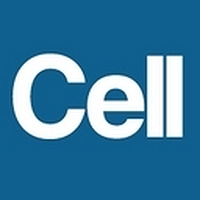 “UV phototherapy used in chronic skin diseases causes redox imbalance and pro-inflammatory reactions, especially in the case of unchanged skin cells.
“UV phototherapy used in chronic skin diseases causes redox imbalance and pro-inflammatory reactions, especially in the case of unchanged skin cells.
To prevent the harmful effects of UV radiation, cannabidiol (CBD) has been used, which has antioxidant and anti-inflammatory properties. Therefore, the aim of this study was to evaluate the effect of CBD on the metabolism of skin keratinocytes in nude rats exposed to UVA/UVB radiation using a proteomic approach.
The results obtained with SDS-PAGE/nanoHPLC/QexactiveOrbiTrap show that exposure of rat’s skin to UVA/UVB radiation, as well as the action of CBD, significantly modified the expression of proteins involved in inflammation, redox balance and apoptosis.
UVA/UVB radiation significantly increased the expression and biological effectiveness of the nuclear factor associated with erythroid factor 2 (Nrf2) and cytoprotective proteins being products of its transcriptional activity, including superoxide dismutase (Cu,Zn-SOD) and the inflammatory response (nuclear receptor coactivator-3 and paralemmin-3), while CBD treatment counteracted and partially eliminated these changes.
Moreover, cannabidiol reversed changes in the UV-induced apoptotic pathways by modifying anti-apoptotic and pro-apoptotic factors (apoptosis regulator Bcl-2 and transforming growth factor-β).
The results show that CBD maintains keratinocyte proteostasis and therefore could be suggested as a protective measure in the prevention of UV-induced metabolic changes in epidermal keratinocytes.”
https://pubmed.ncbi.nlm.nih.gov/33086172/
“In summary, UVA and UVB radiation affect the proteomic profile of keratinocytes of healthy rat skin in different ways. Both types of radiation change the level of proteins involved in the regulation of cellular redox balance, inflammation, and apoptosis. In contrast, topical application of CBD to rat skin, when exposed to UV radiation, helps normalize the expression of keratinocyte proteins that are metabolically relevant by modeling their biosynthesis and degradation. Thus, CBD can maintain the proteostasis of keratinocytes. Because UV therapy is a part of the treatment of skin diseases, e.g. psoriasis, the use of CBD on unchanged skin may be suggested as a protective factor to reduce the metabolic changes caused by UV radiation in unchanged keratinocytes. This suggestion is particularly important when the beneficial effect of cannabidiol on psoriasis-induced skin lesions has recently also been confirmed.”
https://www.sciencedirect.com/science/article/pii/S0731708520315429?via%3Dihub

 “Cannabis is a historical plant which has been used as a medicine in East Asia.
“Cannabis is a historical plant which has been used as a medicine in East Asia. “This study evaluated the synergistic anti-cancer potential of cannabinoid combinations across the MDA-MB-231 and MCF-7 human breast cancer cell lines. Cannabinoids were combined and their synergistic interactions were evaluated using median effect analysis.
“This study evaluated the synergistic anti-cancer potential of cannabinoid combinations across the MDA-MB-231 and MCF-7 human breast cancer cell lines. Cannabinoids were combined and their synergistic interactions were evaluated using median effect analysis. “Considering lack of target-specific antiviral treatment and vaccination for COVID-19, it is absolutely exigent to have an effective therapeutic modality to reduce hospitalization and mortality rate as well as to improve COVID-19-infected patient outcomes.
“Considering lack of target-specific antiviral treatment and vaccination for COVID-19, it is absolutely exigent to have an effective therapeutic modality to reduce hospitalization and mortality rate as well as to improve COVID-19-infected patient outcomes. “The purpose of this study was to evaluate the antioxidant and antimicrobial properties of two extracts from a new Chinese accession (G-309) of Cannabis sativa L. (Δ9 -tetrahydrocannabinol <0.2%) with high content of propyl side chain phytocannabinoids.
“The purpose of this study was to evaluate the antioxidant and antimicrobial properties of two extracts from a new Chinese accession (G-309) of Cannabis sativa L. (Δ9 -tetrahydrocannabinol <0.2%) with high content of propyl side chain phytocannabinoids. “Epilepsy is a chronic neurological disease characterized by recurrent epileptic seizures. Studies have shown the complexity of epileptogenesis and ictogenesis, in which immunological processes and epigenetic and structural changes in neuronal tissues have been identified as triggering epilepsy.
“Epilepsy is a chronic neurological disease characterized by recurrent epileptic seizures. Studies have shown the complexity of epileptogenesis and ictogenesis, in which immunological processes and epigenetic and structural changes in neuronal tissues have been identified as triggering epilepsy. “Graft versus host disease (GVHD) pathophysiology is a complex interplay between cells that comprise the adaptive and innate arms of the immune system. Effective prophylactic strategies are therefore contingent upon approaches that address contributions from both immune cell compartments.
“Graft versus host disease (GVHD) pathophysiology is a complex interplay between cells that comprise the adaptive and innate arms of the immune system. Effective prophylactic strategies are therefore contingent upon approaches that address contributions from both immune cell compartments.

 “Anxiety disorders in young people are frequently comorbid with other mental disorders and respond unsatisfactorily to first-line treatment in many cases.
“Anxiety disorders in young people are frequently comorbid with other mental disorders and respond unsatisfactorily to first-line treatment in many cases.